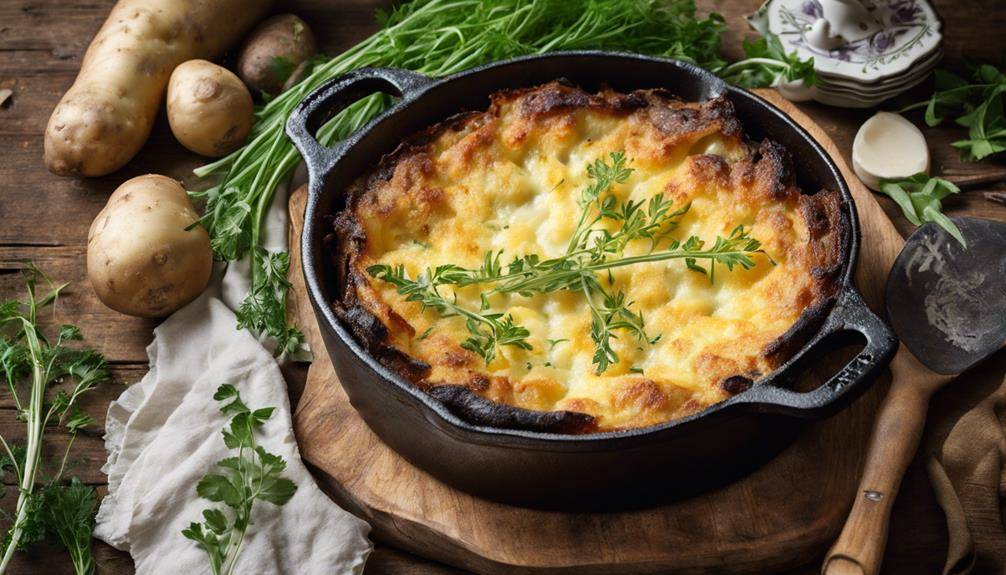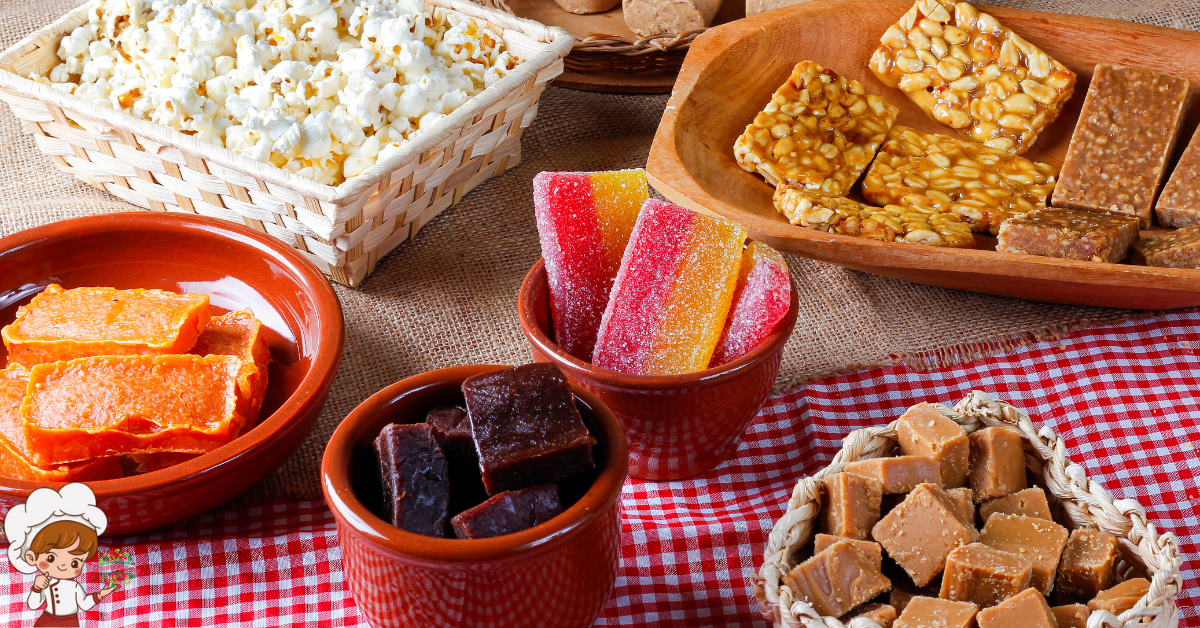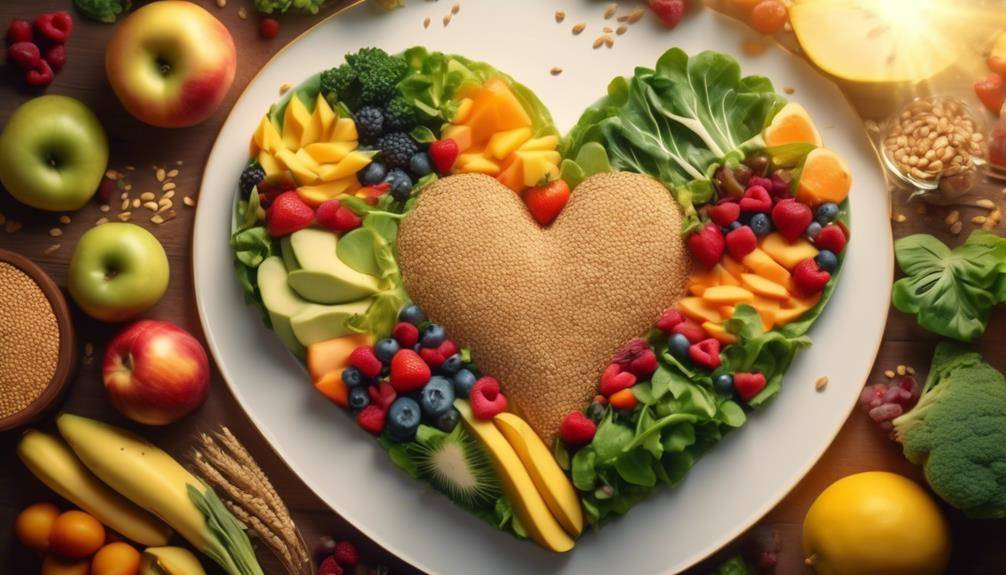How To Avoid Common Mistakes While Gratinating

How To Avoid Common Mistakes While Gratinating; To avoid common mistakes while gratinating, focus on fresh ingredients and proper pre-cooking. Don’t overload your dish; instead, layer ingredients evenly for ideal cooking. Pick the right baking dish, as material affects heat distribution. Season thoughtfully, ensuring each layer gets flavor. Keep an eye on the browning and adjust the cooking time to prevent over or undercooking. Finally, let your gratin rest after baking for the best texture and flavor. Abiding by these tips will elevate your gratin game, and there’s even more to discover about perfecting this dish.
Choosing the Wrong Ingredients
When it comes to gratin dishes, your choice of ingredients can make or break the final result. Freshness is key; using high-quality, fresh ingredients elevates your dish and enhances the overall flavor. Whenever you’re at the store, look for seasonal vegetables and herbs. Fresh produce not only packs more nutrients but also contributes to vibrant flavors that can transform a simple gratin into a culinary masterpiece.
Think about the flavor combinations you want to achieve. While classic choices like potatoes and cheese are always a hit, don’t shy away from experimenting with different ingredients. You could try incorporating root vegetables, such as parsnips or sweet potatoes, for a unique twist. Also, consider adding aromatic herbs like thyme or rosemary, which can elevate the dish’s overall taste profile.
Another aspect to keep in mind is the balance between creamy and crunchy textures. Choosing the right cheese can add richness, while a topping of breadcrumbs or nuts can provide that satisfying crunch. Just remember, it’s essential to harmonize flavors and textures to create a dish that’s not only visually appealing but also delicious.
Skipping the Pre-cooking Step
When you skip the pre-cooking step, you risk ending up with unevenly cooked ingredients and a lackluster texture in your gratin. Pre-cooking not only helps in achieving the right consistency but also enhances the flavors of your carefully chosen ingredients. If you want your dish to shine, don’t overlook this essential step!
Importance of Pre-cooking
How can skipping the pre-cooking step lead to a less-than-stellar gratin? When you skip this essential phase, you risk ending up with unevenly cooked ingredients and a bland flavor profile. Pre-cooking techniques, like blanching or sautéing, not only kickstart the cooking process but also enhance the texture of your vegetables. If you toss raw veggies directly into the oven, they may remain crunchy and fail to absorb the delicious flavors of your sauce or cheese.
Moreover, pre-cooking allows excess moisture to escape, preventing your gratin from becoming soggy. Imagine biting into a rich, creamy gratin only to encounter watery layers—it’s not the experience you want. By sautéing or steaming your ingredients beforehand, you create a solid base that guarantees even cooking and flavor infusion.
Additionally, pre-cooking helps in achieving that golden, crispy top layer everyone craves. So, don’t underestimate the importance of pre-cooking; it’s a simple step that greatly elevates the overall quality of your gratin. By taking the time to pre-cook, you’ll assure a dish that’s not only visually appealing but also bursting with flavor and the perfect texture.
Choosing Ingredients Wisely
Choosing the right ingredients is essential for a successful gratin, and skipping the pre-cooking step can undermine your efforts. Start with ingredient freshness; fresh vegetables not only enhance flavor but also improve texture. Opt for seasonal vegetables to maximize taste and nutrition. When selecting cheese variety, think about how different cheeses melt and complement each other. A mix of sharp and creamy cheeses can create a delightful depth of flavor.
Consider your cooking technique, too. Some ingredients require pre-cooking to achieve the perfect texture contrast. For instance, dense vegetables like potatoes need a head start to avoid undercooking in the oven.
Don’t overlook flavor pairing; herbs can elevate your dish considerably. Fresh herbs like thyme or rosemary can bring brightness, while a careful herb selection can balance richer ingredients. If you’re looking for dairy alternatives, there are many plant-based cheeses that work well in gratins.
Overloading the Dish
When you’re gratin, remember that layer thickness matters. Overloading the dish can lead to uneven cooking and a soggy texture. Balancing your ingredients is essential for achieving that perfect, golden crust you’re aiming for.
Layer Thickness Matters
Getting the layer thickness right is essential for a successful gratin. If you overload the dish with uneven layers, you’ll end up with a mess instead of a masterpiece. Aim for layer uniformity; each component should be sliced consistently to guarantee even cooking. When layers vary in thickness, some parts may be overcooked while others remain raw, ruining the overall experience.
You want to create a delightful texture contrast, where each layer complements the others. For instance, pairing thinly sliced potatoes with a creamy béchamel sauce works beautifully, but if the potato slices are too thick, they won’t cook through properly, leaving you with a gummy interior and crunchy exterior.
Instead of piling everything haphazardly, take the time to arrange your ingredients in a way that respects their cooking times and textures. This careful layering not only enhances flavor but also leads to a visually appealing dish. So, as you gratin, remember that less can be more. Pay attention to your layer thickness, and you’ll achieve that perfect balance of flavors and textures every time. Your gratin will be the star of the table!
Ingredient Balance Essential
Layer thickness sets the stage, but ingredient balance is just as important for a successful gratin. You don’t want to overload your dish with too many ingredients, as this can overwhelm the palate and muddle the flavor profiles. Instead, focus on achieving the right ingredient ratios. Think about how each component contributes to the overall experience.
Start by choosing a star ingredient, whether it’s potatoes, vegetables, or pasta, and build around it. Pair it with complementary flavors—like cheese, herbs, or spices—that enhance rather than overshadow. If you’ve got a rich cheese, consider balancing it with lighter ingredients to prevent heaviness.
Remember, too much of a good thing can lead to a clashing symphony of flavors. You want each bite to offer a harmonious blend, not an overload. Taste as you go, adjusting ingredient ratios to guarantee every component shines.
Ultimately, ingredient balance is about restraint and thoughtful combinations. By carefully selecting and proportioning your ingredients, you’ll create a gratin that’s not only visually appealing but also a delight to the taste buds. Enjoy the process, and let your dish reflect your culinary vision!
Ignoring Proper Layering
Although it might seem tempting to throw all your ingredients together haphazardly, ignoring proper layering can lead to uneven cooking and a lackluster texture in your gratin. To achieve that perfect creamy, crispy blend, you need to pay attention to the layer types and layering techniques you use.
Start by deciding on your layer types. For example, you can alternate between vegetables, proteins, and sauces. This not only adds depth of flavor but also helps in achieving the right cooking time for each ingredient. When layering, consider the density of your ingredients—place denser items at the bottom and lighter ones on top. This guarantees that everything cooks evenly.
Using appropriate layering techniques is essential, too. Stagger your layers instead of piling them directly on top of one another; this allows heat to circulate better, promoting consistent cooking throughout. You might also want to sprinkle cheese or breadcrumbs between layers for added texture and flavor, giving your gratin that delightful golden crust.
Keep in mind that the thickness of each layer matters. If you make them too thick, some parts may remain undercooked while others end up overdone. Aim for uniformity in thickness to guarantee everything bakes together harmoniously.
Using Inappropriate Baking Dish
Choosing the right baking dish is just as important as how you layer your ingredients. If you use an inappropriate baking dish, you could end up with uneven cooking or a burnt top while the bottom remains undercooked. Different baking dish types can greatly impact the final result of your gratin.
For instance, ceramic dishes retain heat well and distribute it evenly, which is ideal for achieving that golden, bubbly top you desire. On the other hand, metal pans heat up quickly but can lead to a crust that browns faster than the rest of the dish cooks. If you opt for glass, keep in mind that it can take longer to heat but offers excellent visibility during cooking.
Additionally, consider the size of your baking dish. A dish that’s too small may overflow, while one that’s too large can result in a thin layer that dries out quickly. It’s vital to pick a dish that complements the amount of ingredients you’re using.
Don’t forget about depth, either. A deeper dish might require longer cooking times to guarantee the middle layers get adequately heated. Similarly, a shallow dish could lead to quicker evaporation of moisture, leaving your gratin dry. Ultimately, the right baking dish not only enhances the presentation but also makes sure your dish cooks evenly, resulting in a delicious, satisfying meal.
Neglecting Seasoning
Often, home cooks overlook the importance of seasoning when preparing a gratin, but it’s an essential step that can make or break the dish. Proper seasoning elevates the flavors and guarantees a delightful experience for anyone who digs in. When you’re layering ingredients, don’t just focus on the main components; season each layer thoughtfully.
Start with the basics: salt, pepper, and perhaps a hint of garlic or onion powder. These seasoning techniques can enhance the natural flavors of your vegetables or proteins. Remember, seasoning isn’t a one-time event; it’s a process. Taste as you go, and adjust according to your preference.
You also want to achieve a good flavor balance. If you’re using rich ingredients like cheese or cream, a little acidity from lemon juice or a splash of vinegar can cut through that richness and add brightness. Fresh herbs like thyme or rosemary can contribute depth without overwhelming the dish.
Don’t shy away from experimenting with spices, either. A pinch of nutmeg can work wonders in creamy gratins, while smoked paprika can add a warm, earthy note. Just be careful not to overdo it; you want your flavors to complement each other, not compete.
In short, take the time to season thoughtfully and taste regularly. Your gratin will reflect the care you put into it, transforming a simple dish into something truly memorable.
Overcooking or Undercooking
When you’re making a gratin, getting the cooking time right is essential, as overcooking or undercooking can lead to a disappointing texture and flavor. When you overcook your gratin, it can become dry and unappetizing, while undercooked gratin might be soggy or hard in places. To avoid these pitfalls, you need to master temperature control and timing techniques.
First, preheat your oven to the recommended temperature for your recipe. This sets the stage for even cooking. Use an oven thermometer to verify that the temperature is accurate; an inconsistent oven can throw off your timing. Once your gratin is in the oven, keep an eye on it. Instead of relying solely on the clock, use your senses—smell, sight, and even touch—to gauge doneness.
A good practice is to check your gratin a few minutes before the suggested cooking time. Stick a fork in the center; if it slides in easily, you’re likely in the right range. You can also tap the dish lightly; if it feels firm but slightly jiggles in the center, it might need a bit more time. Remember, you can always return it to the oven if it’s undercooked, but you can’t fix an overcooked gratin. By honing your timing techniques and maintaining proper temperature control, you’ll serve up a gratin that’s perfectly cooked every time.
Forgetting to Monitor Browning
Monitoring the browning of your gratin is as significant as getting the cooking time right. If you neglect this step, you risk ending up with a dish that’s either burnt on top or pale and unappetizing. Effective browning techniques can elevate your gratin, giving it that irresistible crunchy layer that everyone loves. So, how do you make sure you’re on top of this vital aspect?
First, pay attention to your oven’s temperature. Each oven can vary, so it’s important to know how yours performs. Setting it too high can lead to rapid browning, while too low may not achieve that desired golden finish. Check your gratin regularly, particularly during the last 10-15 minutes of cooking. This is when monitoring times becomes vital.
Use your senses—look for a rich, golden brown color and inhale the delightful aroma that should fill your kitchen. If you notice areas browning too quickly, consider rotating the dish or covering it lightly with foil to prevent burning. Remember, you can always adjust by lowering the temperature slightly to control the browning better.
Don’t forget to keep an eye on the edges, as they often brown faster than the center. By staying vigilant and practicing these browning techniques, you’ll make sure your gratin turns out perfectly cooked and beautifully browned every time.
Not Letting It Rest
Letting your gratin rest is an essential step that many overlook, yet it can make all the difference in texture and flavor. After pulling your dish from the oven, it’s tempting to dive right in. However, giving it some time to rest allows the layers to settle, enhancing the overall experience.
The resting benefits are significant; when you let your gratin sit, the ingredients have a chance to meld together. This resting period enables the starches to absorb moisture and redistribute, which prevents a soupy texture. Instead of a runny mess, you’ll end up with a harmonious, cohesive dish that holds its shape beautifully when served.
Additionally, the temperature impact shouldn’t be underestimated. If you serve your gratin immediately, you risk burning your mouth and losing the nuanced flavors that develop as it cools slightly. Allowing it to rest for about 10 to 15 minutes not only improves the flavor but also the safety of your meal. This waiting period helps to temper the heat, making it more enjoyable to eat right away.
Next time you prepare a gratin, remember that patience pays off. By resisting the urge to serve it hot from the oven, you’re ensuring better texture, flavor, and a more satisfying dining experience. So, take a moment to let your creation rest before indulging; it’s a small effort that yields big rewards.
Frequently Asked Questions: Avoid Common Mistakes While Gratinating
Can I Use Frozen Vegetables for Gratin Dishes?
Yes, you can use frozen vegetables for gratin dishes. Just choose a good frozen vegetable selection, and thaw them properly before adding to your dish. Thawing techniques like microwave or refrigerator work best for even cooking.
How Do I Know When My Gratin Is Perfectly Cooked?
You’ll know your gratin’s perfectly cooked when it has a golden-brown top, indicating it’s done. Check texture indicators; it should be tender but not mushy. Color cues reveal its deliciousness, so keep an eye on that crust!
What Are Some Alternative Toppings for a Gratin?
You can try various cheese varieties like Gruyère or cheddar for richness. Combine herb seasonings such as thyme or rosemary to elevate flavors. Experimenting with toppings can create a delightful twist on your classic gratin.
Can I Prepare Gratin in Advance and Reheat It?
Yes, you can prepare gratin in advance. Store it properly in the fridge, then use reheating techniques like baking at a low temperature to guarantee it warms evenly without drying out. Enjoy your delicious dish!
Is It Necessary to Cover the Gratin While Baking?
It isn’t necessary to cover the gratin while baking. Leaving it uncovered allows for better browning and crispiness. However, if you want steam retention, a loose cover can help maintain moisture without sacrificing texture.
Conclusion
By avoiding these common mistakes, you’ll elevate your gratin game to new heights. Remember to choose the right ingredients, pre-cook when necessary, and layer thoughtfully. Don’t overload the dish or neglect seasoning, and always use an appropriate baking dish. Keep an eye on the cooking time to prevent over or undercooking, monitor that beautiful browning, and let your dish rest before serving. With these tips, your gratin will impress every time!








